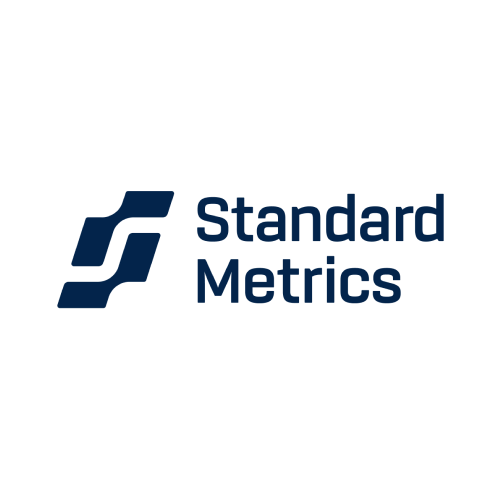Industry Pressure is Real
Private markets have historically run on personal connections and spreadsheets. Simultaneously, private markets performance has been better than that of public markets over the last two decades.
So, an old-school industry that is over-performing — why would there be any need for technology? Well, it’s the classic “success begets competition” scenario seen in rapidly growing industries:
- Due to out-performance, more LP capital is flowing into private markets, leading to more funds raising capital.
- With the inflow of new capital, established firms are raising more money, leading to an increase in fund size and complexity at the upper end of the market.
- With growing fund sizes, LPs are allocating a significant percentage of their private markets allocations to existing GP relationships.
- Some LPs are starting to conduct operational due diligence in earlier phases to better prioritize potential fund investment opportunities.
- With high competition and limited networks, emerging managers are using technology to differentiate and convince LPs that they can return more capital through smart use of internal and external data.
- Increasing dry powder and the number of funds competing for the same deals are leading to larger valuations and deal sizes. Especially with the recent public market downturn, returns are diminishing and investors are looking for proprietary opportunities at lower price points to make up for diminishing returns.
- With legacy data providers (such as CapIQ and PitchBook) becoming staples in every fund, GPs are looking to find new data sources, both internal and external, to build truly proprietary deal flow engines.
These trends are resulting in the need for robust data and analytics platforms to gain an edge against competition, improve operational efficiency, and make better decisions.
Strategic Use of Data
Deal Sourcing
There are more funds and capital chasing deals than ever before. Even though valuations have begun contracting, the best companies still attract swarms of investors at high valuations. Firms need a differentiated strategy to not only identify the best opportunities that might have gotten overlooked by other investors, but also build strong relationships with the potential breakout winners before they grow into their target investment range. This is easier said than done, although certainly not impossible. With the right processes and data, firms can surface the right opportunities within their allocation strategy, and pre-qualify and prioritize their investment targets efficiently.
Due Diligence
Although data should never be blindly followed, investors are flying blind without it. Firms should leverage both market and portfolio data to support decision-making. Historical data from portfolio companies can provide proprietary insight into how companies with similar metrics and trajectories have turned out, which can be especially useful for sector-specific investors. That being said, times change, and each company is uniquely positioned in their dynamically changing industries. Supporting historical portfolio data with the latest market data can provide investors with an overarching picture of the current state of the market. Armed with both internal and external data, investors can effectively conduct deal due diligence and invest in companies that are best positioned for success.
Portfolio Management
Deal-making doesn’t end after the initial investment. Many investors reserve capital for future rounds (common in venture capital) or add-on acquisitions (common in mid-market buyouts). To effectively deploy reserve capital, investors need granular, accurate data on both their portfolio and the wider market. While portfolio company metrics are the starting point to understanding growth levers and opportunities, having wider visibility into fund cash flows and external market opportunities alongside portfolio company data is key to making informed decisions that ultimately maximize fund performance.
Data is the backbone of portfolio management, but it’s not a silver bullet. Investors need to build collaborative, mutually beneficial relationships with their portfolio companies. Data sharing needs to be seamless, and companies should be receiving value out of the process as well – investors should provide aggregated benchmarks back to their portfolio and offer day-to-day support in their areas of expertise, specifically around leveraging their networks for hiring and lead introduction purposes.
Investor Relations
Some may think that private markets run on numbers, but in reality, it runs on relationships. Investing is inherently a risky business, and the best capital allocators know that. What matters is good processes, a differentiated edge, and exceptional communication. A good track record helps immensely, of course, but nothing is more important than relationships that are formed through open communication, as even the best investors can post terrible losses, but whether they can stand back up will depend on the trust they have built with their LPs.
GPs try to predict market trends to take advantage of shifting tides, which usually ties into raising funds with new strategies and segments, requiring an LP base with strong trust. Once again, every GP’s future depends on their past– performance is a baseline, but trust through consistent communication makes the world go round, and for that, every investor needs best practice processes to collect, analyze, share, and act on data.
What’s Next
There is a lot more nuance to each of these areas. In today’s world, “everyone” is using data and technology; it’s really about how you use it to gain a competitive advantage.
In the next installment of our blog series, we will explore how to leverage internal and external data to optimize your deal sourcing processes.
No more flying blind. Contact us today to learn more about supercharging your operations through data and technology.
Capture more proprietary internal data and collaborate with your portfolio via Standard Metrics. Make better use of external market data and build proprietary deal sourcing channels via Grata.
Automate your portfolio reporting
Find out how you can:
- Collect a higher volume of accurate data
- Analyze a robust, auditable data set
- Deliver insights that drive fund performance



